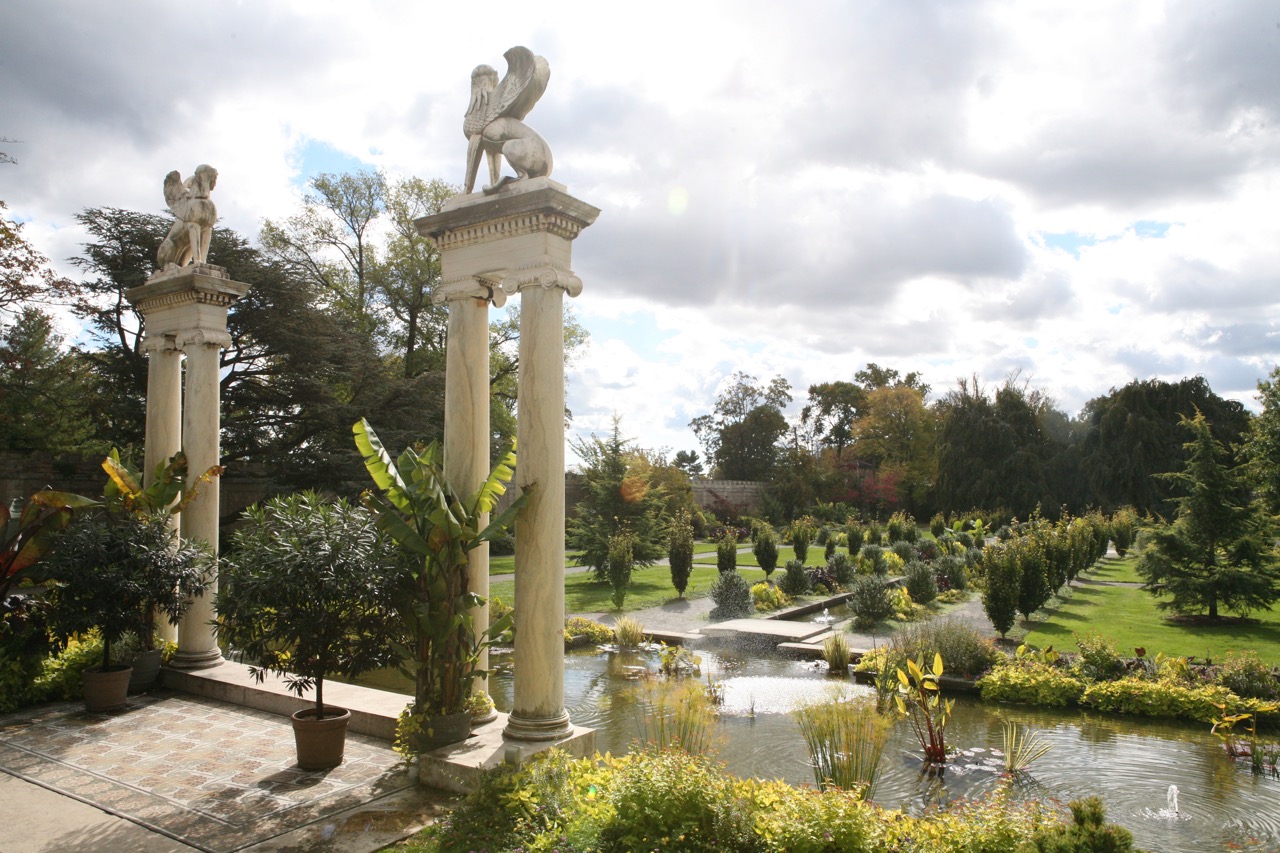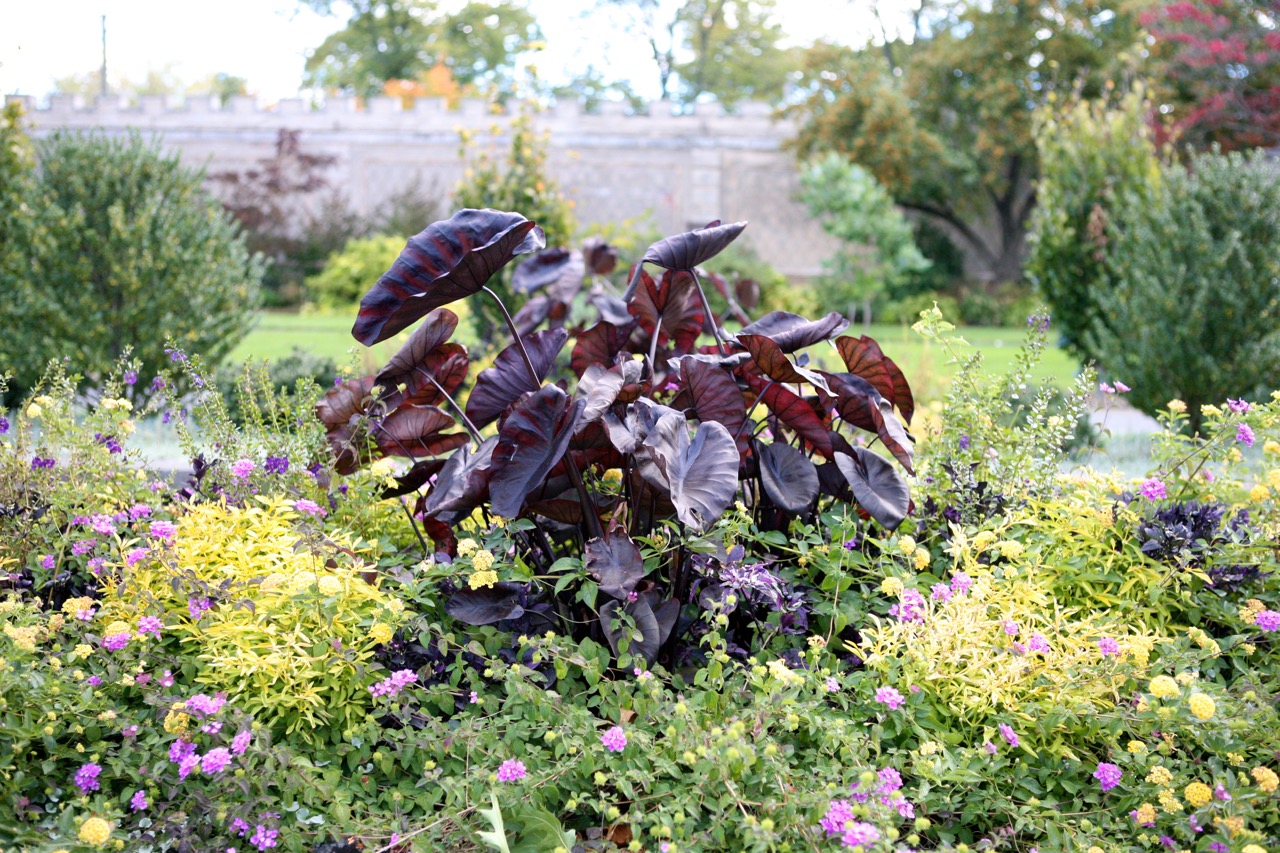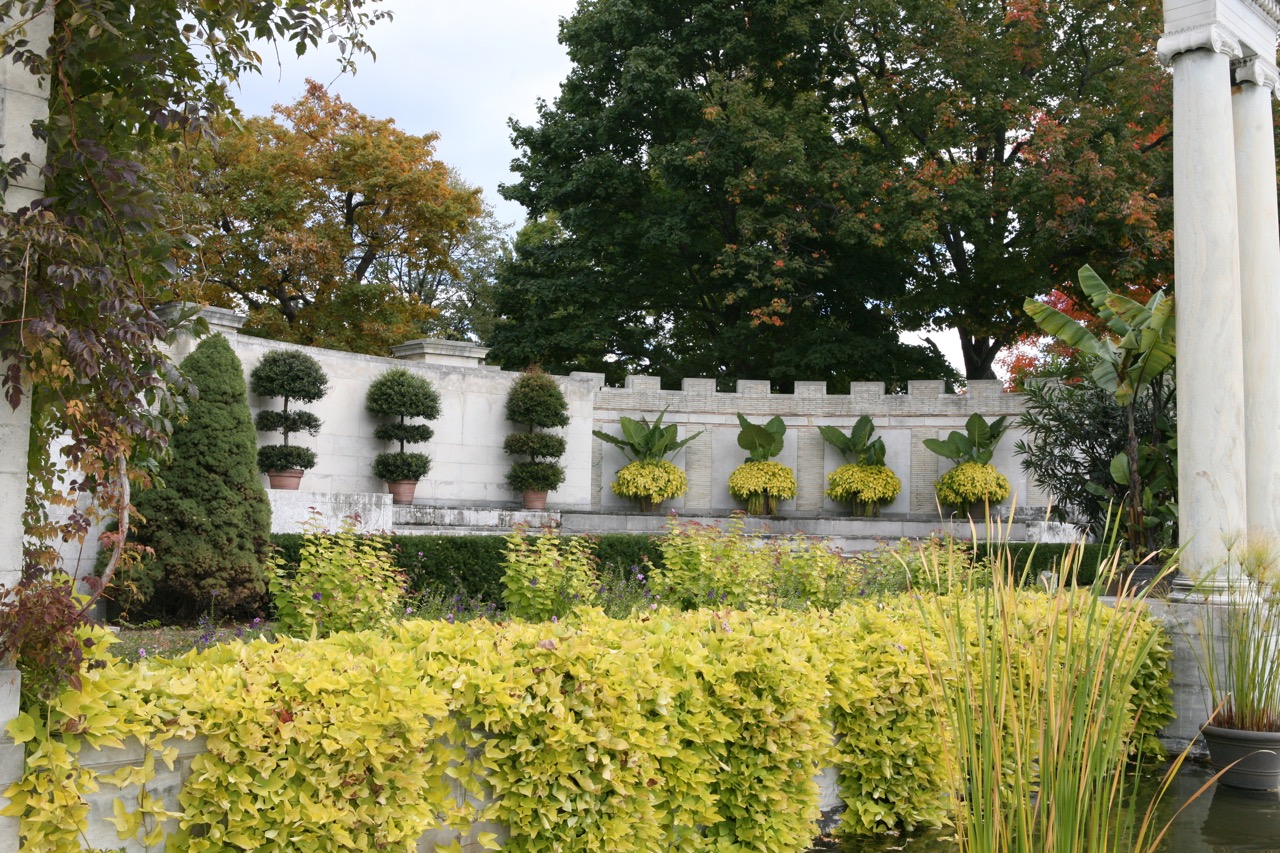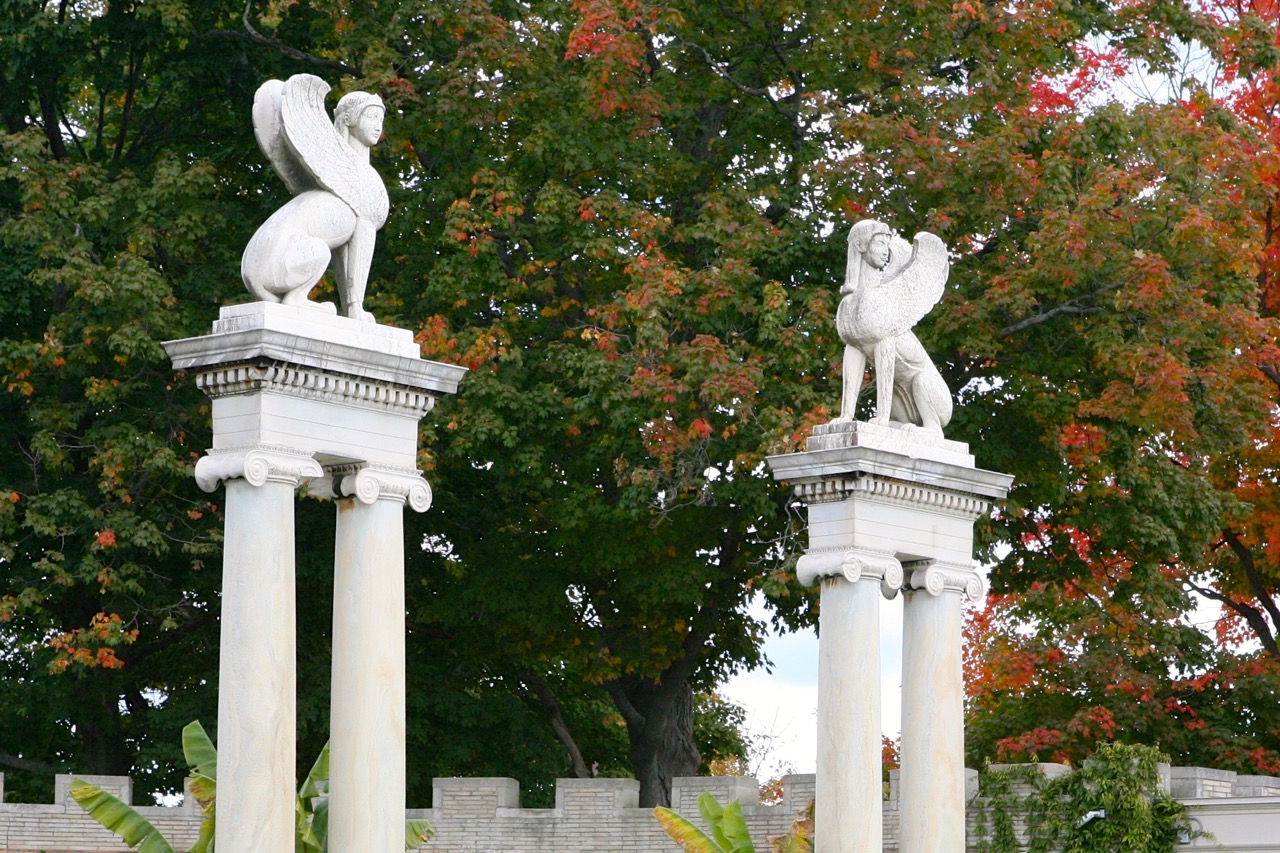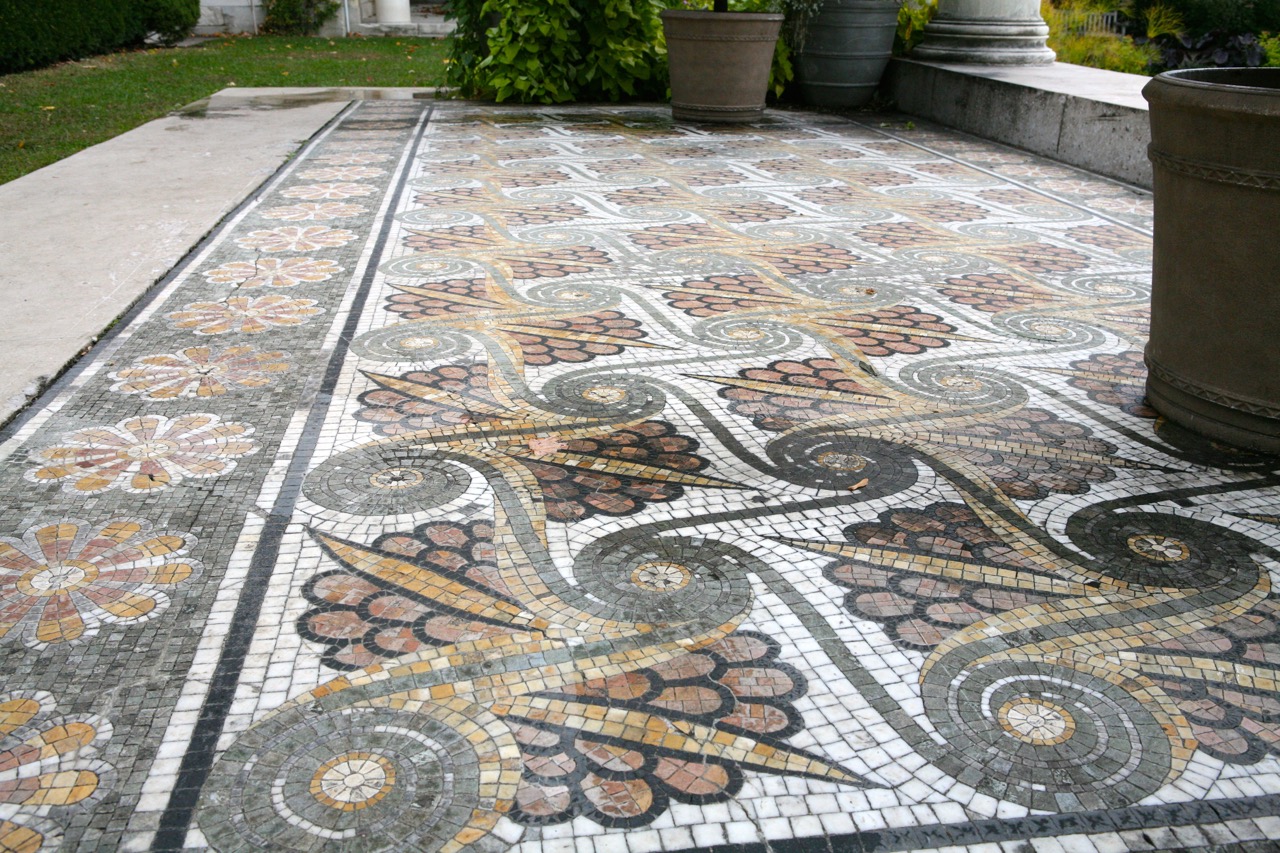What is an Indo-Persian Garden? And how did one find it’s way to Yonkers, New York?
The terrible events in the news these days seem to accentuate our differences and encourage us to be wary of the other. My recent visit to Untermyer Gardens was a refreshing example of the power of finding beauty in and respect for different cultures.
Despite an awful head cold, my curiosity about this Indo-Persian garden in Yonkers, NY compelled me to take the 30-minute drive from Manhattan to see it for myself. Now a city park set amidst businesses, a hospital, schools, and residences. It didn’t look like much at first -- or perhaps I didn’t know where to start. The mansion that was once part of the property was long gone, which made it hard to see where the garden began.
The open lawn area originally faced the main house which no longer exists, and was the site of a series of greenhouses.
Artemis, the goddess of the natural world, welcomes visitors into the walled garden. This feature would not be typical in a traditional Islamic garden where images of people would not be used.
Beyond an open lawn area, past the visitor’s center, a garden door set in a massive crenelated wall drew me. As I approached I was greeted by the bass relief sculpture of a reclining Artemis, goddess of the natural environment. The sound of water, and deep shade just beyond, created a wonderful sense of compression and expansion of space. Inside, the walled garden transported me to another place. Simple fountains added sound to bisected water basins. Our mild fall weather and the micro-climate created by the enclosed space meant that the garden still looked amazing. Repeating Japanese hollies and bold exotic annuals tied the planting scheme together. There were both shady and sunny borders, pathways for exploration, benches for resting; a terraced section to the west had open views to the breathtaking cliffs of the Hudson River. Mosaics, sphinxes, an amphitheater, and summer pavilions at each corner come right out of the Islamic tradition.
During my visit I had the good fortune to run into horticultural curator Jessica Norman. Her passion for and knowledge of the garden were infectious, and she was generous in sharing the story of this garden.
Its story begins in the early 1900’s with Samuel Untermyer. He was a first generation American born to German-Jewish immigrant parents. After studying at New York public schools he earned a law degree from Columbia University and became a wildly successful corporate lawyer. If the first part of his life was about becoming rich, the second part was about giving back. He championed affordable public transportation, was a prominent Zionist, championed women’s right to vote, and led the Non-Sectarian Anti-Nazi League. Untermyer was also a passionate plantsman and gardener.
Norman explained, “In 1915 Untermyer asked architect William Welles Bosworth to design for him the finest garden in the world. Apparently Bosworth called his client John D. Rockefeller to ask if this commission was for real. Rockefeller reportedly replied that indeed it was real, that Untermyer had the resources to make it happen”; ”have fun,” he said. “At its height in the 1920’s the garden was maintained by 60 gardeners and supplied by 60 greenhouses where spring, summer, and fall planting schemes were propagated.”
For his “finest garden in the world,” Untermyer and Bosworth turned to the Persian and Islamic traditions: a clear choice in terms their elegance and luxury. Also an interesting choice, given that Untermyer was Jewish and his wife Minnie was Christian. Clearly they were open to the beauty of other cultures.
Cyrus the Great ruled over the first Persian Empire 2,500 years ago. Stretching from Eastern Europe to North India, modern day Iran, Iraq, and Pakistan, Persia was known for its organized central government, its roads, and its postal system.
Persians were also known for their garden design. Walled outdoor spaces were meant for physical and spiritual replenishment; they provided shelter from the hot sun, cooling water, and luxurious plantings. Under Islam, the Persian garden added references to the garden of Eden: including the Bible’s four rivers and trees of life and wisdom. The garden was a representation of heaven on earth: paradise. Design drew on simple geometric forms. Stone work depicted the natural world such as plants and animals. And there was a strong connection between indoor and outdoor rooms, one flowing seamlessly into the other. One of the most famous Islamic gardens exists in Granada, Spain in the Alhambra and Generalife palace complex.
Untermyer’s ambitious garden eventually fell into ruin, and portions of the original 150 acres had to be sold off. Today the gardens comprise roughly 40 acres. Thanks to the Untermyer Gardens Conservancy, the gardens are slowly being restored to their original splendor. Their mission is to “showcase exuberant horticulture in the magnificent landscape designed by Welles Bosworth in 1915” and to celebrate the lives of Samuel and Minnie Untermyer. Their website is among the best I have seen, with wonderful news clippings and photos that bring its history to life.
As a public park of the City of Yonkers, the garden is open to the public for free, but don’t hesitate to contribute to the Conservancy when you do visit so that you can help bring this garden back to life.
Untermyer Park is a on the National Register of Historic Places and is truly magnificent part of our heritage.

